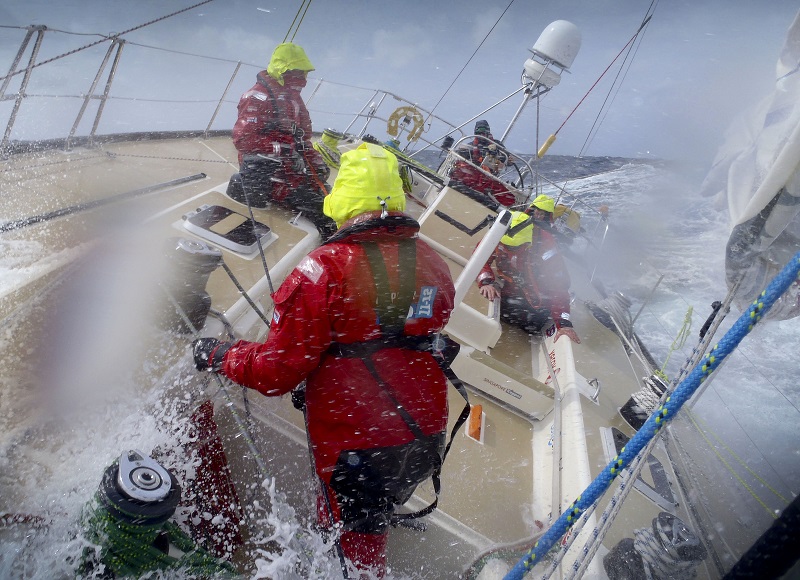Leading Dynamic Teams: Alignment, Capability, Autonomy
This is one of our free-to-access content pieces. To gain access to all Ideas for Leaders content please Log In Here or if you are not already a Subscriber then Subscribe Here.

This Idea offers insights from a round-the-world yacht race to reveal several key behaviours that make a real difference to team performance. Using sports teams as a metaphor for understanding team dynamics in organizations and the associated leadership challenges can be useful. However sports teams generally seek short-term black or white goals; whereas in business, and life, the time horizons are longer and the outcomes much more graded. Trans-ocean sailing teams provide a more realistic environment for leadership analysis.
Trans-ocean sailing fits the organizational team/leadership metaphor well, as in order to achieve the basic goal of getting from A to B, the team needs to function effectively in handling the boat as well as navigating successfully. Furthermore the unpredictable element of weather conditions simulates the unpredictable nature of business environments, requiring team focus to be rapidly changed from the planned activity to a critical survival one. This situation rarely occurs in standard sports events.
Ashridge Business School studied the 2013 Clipper Round the World Yacht Race to identify what behaviours and skills proved to be most effective in achieving success in the event.
Lead researcher, Trudi West, conducted 77 interviews with 42 crew and skippers at four key stop-overs during the 12-months of the race to understand the leadership lessons that the adverse weather, over-whelming tiredness, close contact and the general unpredictability of life at sea wrought on the teams. West's report identifies three key behaviours that made a real difference to the performance of the teams:
West observed that "when these three behaviours were applied in relation to each other, teams were inspired to put in an 'awesome effort'. When they were over or under-developed teams experienced 'friction', which impaired their overall agility and slowed them down and led to 'fraction' or teams-within-teams.”
Before distilling these three behaviours, West had identified eight challenges that were often highlighted by interviewees, and intriguingly they were not the technical or endurance ones of the actual sailing but related to interactions with the other crew members:
Ashridge researchers developed a 'Winning Behaviours Model', drawing on the behaviours of alignment, capability and autonomy to create a three-dimensional axis, where individuals’ relative strengths can be plotted to indicate their potential to impact outcomes in achieving goals. They believe this model can have universality beyond the context in which it was created and “has the potential in an organizational situation to predict outcomes by positioning an individual or a team on each of the three axes of the cube.”
It is also interesting to note that the crews in the Clipper Race were different to most teams, as they were neither employees nor volunteers they had paid to be there, so to an extent were customers too. Clearly this alters the dynamic subtly but effectively with comparison to the ‘standard’ team. The crew was a more generic ‘stakeholder’. West relates their relationship with the leader/skipper in terms of various leadership models in her report and sees the most appropriate model as Pigeau and McCann’s 2002 reconceptualisation of ‘command and control’; their CAR Model around three observations of what a modern commander requires to operate successfully:
They suggest these capabilities should be developed in relation to each other as, for example, responsibility without authority leads to ineffectual command whereas authority without responsibility results in dangerous command.
Team leaders should consider applying the three dimensional ‘alignment, capability and autonomy’ model to assess their own teams and to understand the dynamics that account for individual capability, and team capability as well as the capacity of leaders to develop capability in others.
The Ashridge research and the CAR Model highlight the limitations in the type of leadership that rests on formal authority and explicit responsibility.
Team leaders should bear in mind that factors influencing their own behaviour and their ability to influence others rest, as West suggests, “more powerfully within personal authority and intrinsic responsibility, such as our own drive to achieve what is important to us as well as what is important to others, with their tacit consent. From here, it takes less energy to develop alignment, build capability and support autonomy.”
The full report ‘The Challenge of Leading: Insights from the Clipper Round the World Yacht Race, June 2013’ can be obtained from from Rebecca Coatswith, Research Coordinator, Ashridge Business School. Her email address is: rebecca.coatswith@ashridge.org.uk.

Ideas for Leaders is a free-to-access site. If you enjoy our content and find it valuable, please consider subscribing to our Developing Leaders Quarterly publication, this presents academic, business and consultant perspectives on leadership issues in a beautifully produced, small volume delivered to your desk four times a year.

For the less than the price of a coffee a week you can read over 650 summaries of research that cost universities over $1 billion to produce.
Use our Ideas to:
Speak to us on how else you can leverage this content to benefit your organization. info@ideasforleaders.com